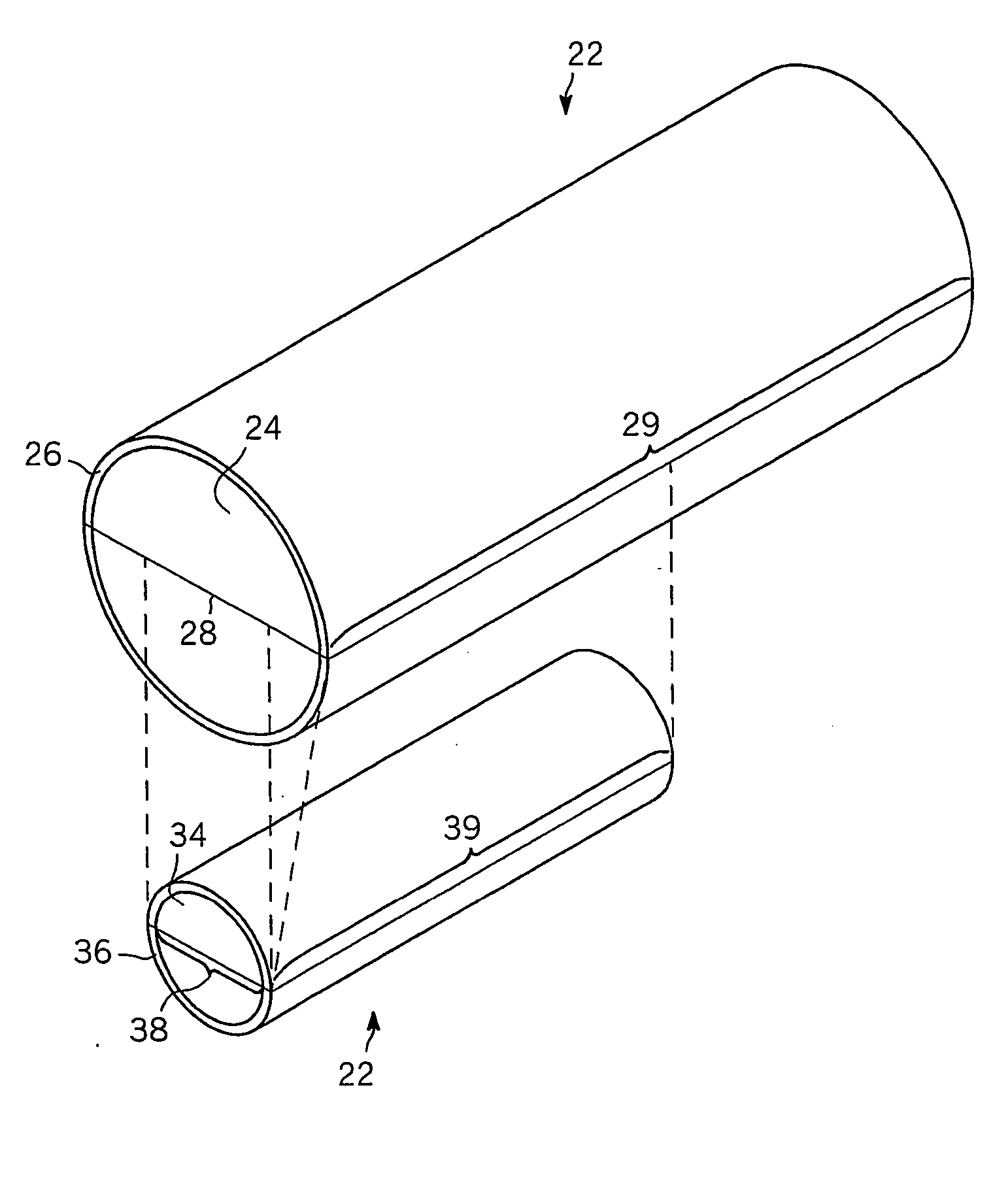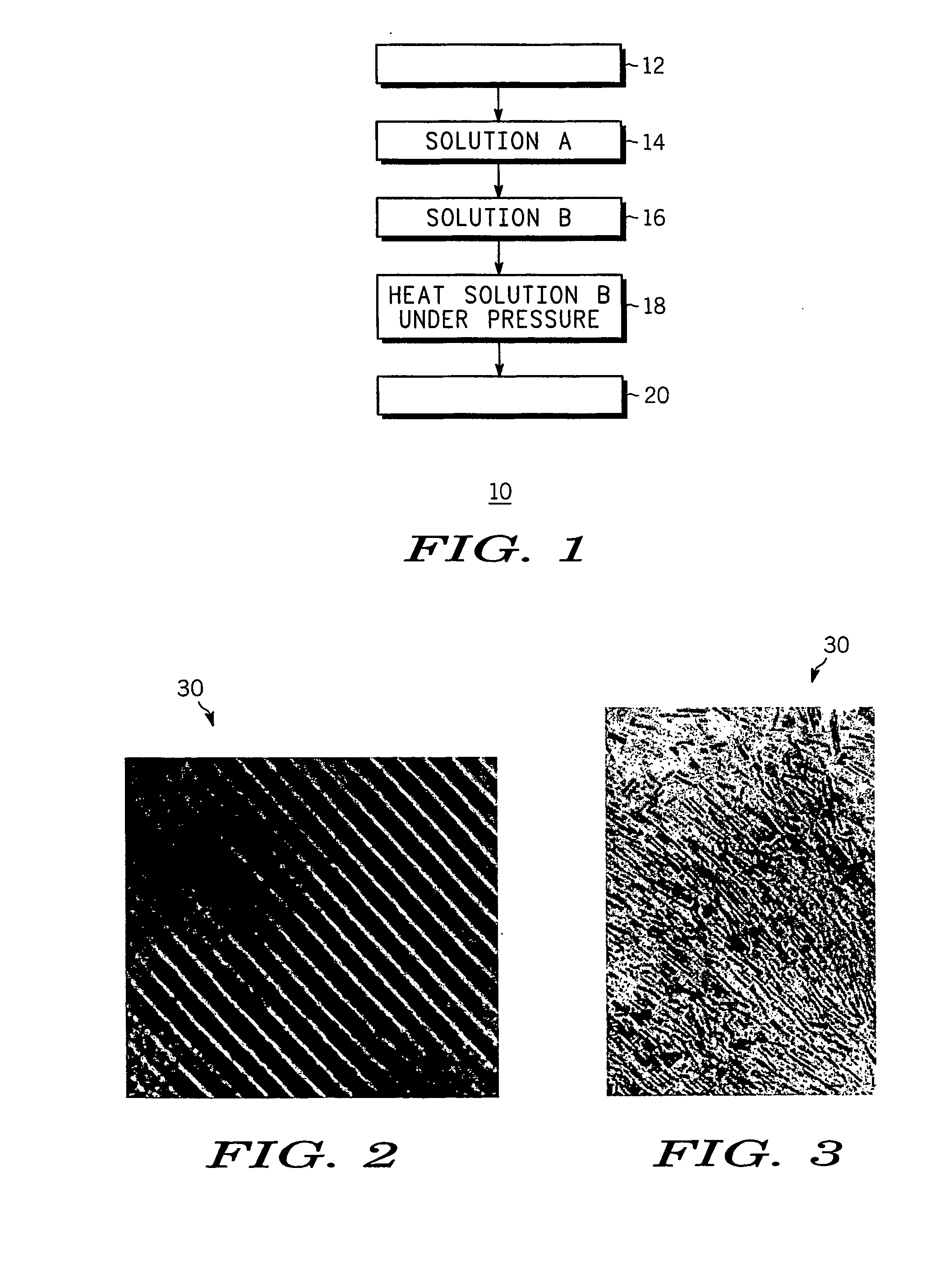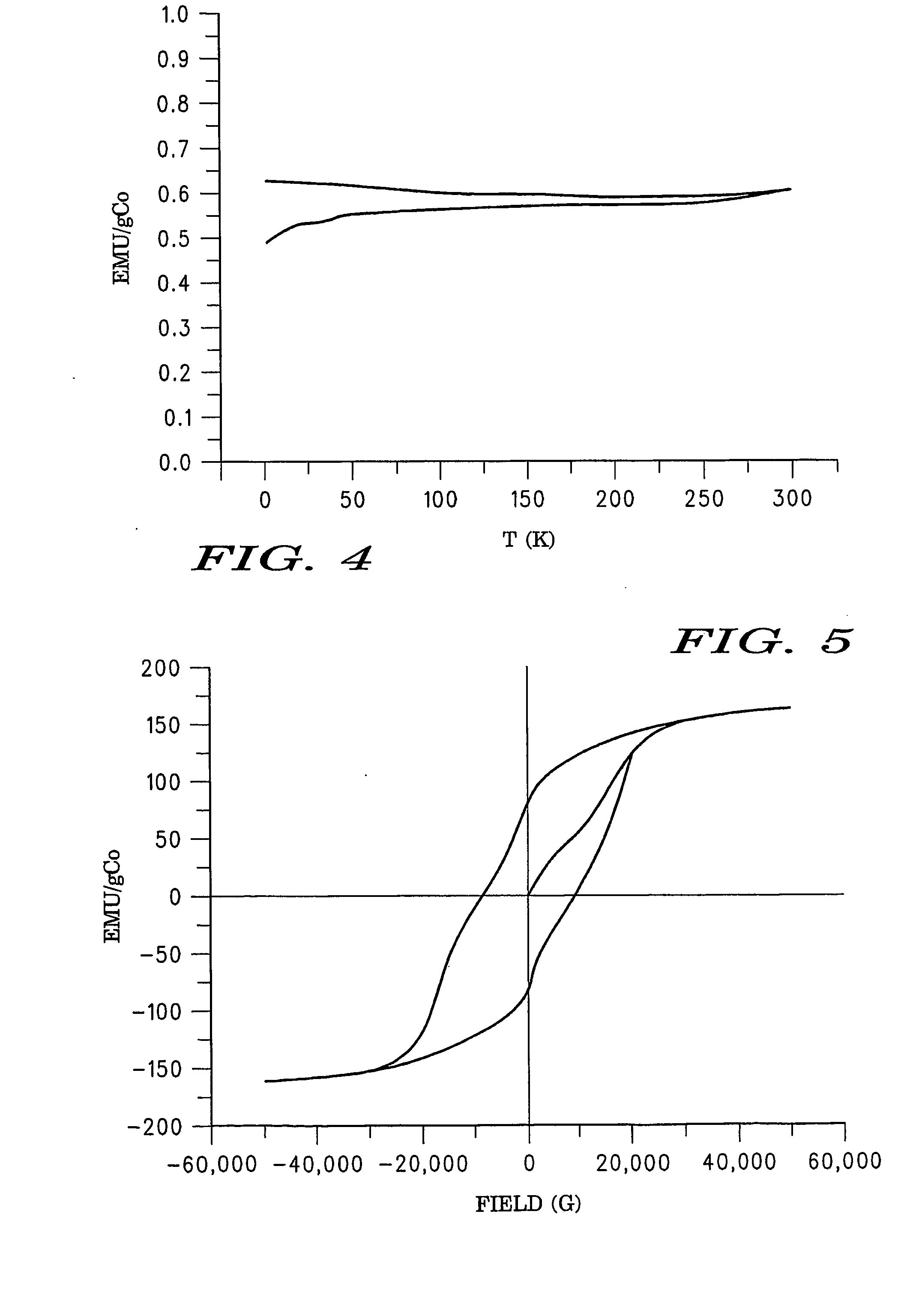Magnetic nanomaterials and synthesis method
a technology of magnetic nanoparticles and nanoparticles, which is applied in the field of magnetic nanoparticles and magnetic nanoparticle synthesis methods, can solve the problems of high cost of synthesis, high permeability films only up to approximately 500 mhz, and inability to integrate them economically
- Summary
- Abstract
- Description
- Claims
- Application Information
AI Technical Summary
Benefits of technology
Problems solved by technology
Method used
Image
Examples
Embodiment Construction
[0018] In high frequency integrated circuit applications, such as used in wireless portable electronic devices, passive components such as inductors and transformers, as well as structures for signal isolation, can be improved through the integration with magnetic nanoparticle materials. One particular method in accordance with an embodiment of the invention is the use of composite materials comprising of a matrix material containing a certain volume fraction of magnetic nanoparticles that have a saturation magnetization (Ms) and an anisotropy (Hk) where all three (volume fraction, Ms, and Hk) are optimised such that the composite material has a permeability high enough and a ferromagnetic resonance at high enough frequencies such as to allow improved RF-passive devices (such as inductors, transformers, isolation) at high MHz and GHz frequencies. Saturation magnetization (Ms) can be optimised through varying the chemical composition of the nanoparticles. Anisotropy (Hk) can be optim...
PUM
| Property | Measurement | Unit |
|---|---|---|
| length | aaaaa | aaaaa |
| temperatures | aaaaa | aaaaa |
| temperatures | aaaaa | aaaaa |
Abstract
Description
Claims
Application Information
 Login to View More
Login to View More - R&D
- Intellectual Property
- Life Sciences
- Materials
- Tech Scout
- Unparalleled Data Quality
- Higher Quality Content
- 60% Fewer Hallucinations
Browse by: Latest US Patents, China's latest patents, Technical Efficacy Thesaurus, Application Domain, Technology Topic, Popular Technical Reports.
© 2025 PatSnap. All rights reserved.Legal|Privacy policy|Modern Slavery Act Transparency Statement|Sitemap|About US| Contact US: help@patsnap.com



